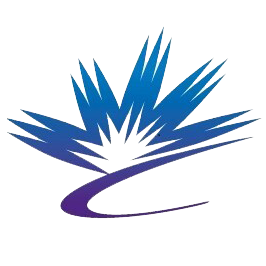Canadian and Swedish light sources cooperating to advance science and innovation
The King of Sweden and the Governor General of Canada preside over MOU signing ceremony between MAX IV Laboratory and the Canadian Light Source.
Rob Lamb (second from left), CEO of Canadian Light Source, and Christoph Quitmann (third from left), director of MAX IV Laboratory, sign the agreement between the Canadian and Swedish national synchrotron light sources. His Excellency the Right Honourable David Johnston, Governor General of Canada (left), and His Majesty King Carl XVI Gustaf of Sweden (right), presided over the signing in Lund, Sweden. Photo: MAX IV Laboratory
Lund, Sweden – The Canadian Light Source is strengthening ties with the synchrotron in Sweden as it continues to advance science and innovation in Canada.
Today, His Excellency the Right Honourable David Johnston, Governor General of Canada and His Majesty King Carl XVI Gustaf, King of Sweden presided over the signing of an agreement between the Canadian and Swedish national synchrotron light sources.
Canadian Light Source Inc. (CLSI), located in Saskatoon, Sask., and MAX IV Laboratory, located in Lund, Sweden operate successful synchrotron facilities with broad scientific programs, and share common scientific and technical goals.
“MAX IV is a truly disruptive technology in the light source world, and we are thrilled to be collaborating with our colleagues in Sweden to exchange our expertise and ensure that the Canadian and Swedish people benefit from our mutual advancements and discoveries,” says Dr. Rob Lamb, CEO of the CLS.
MAX IV and CLS will collaborate closely on the development of technologies that will enhance the performance of their user facilities, and increase interactions and cooperation between the light source communities of Sweden and Canada.
“Collaboration with the best scientists around the globe has been a prerequisite in building MAX IV, and we are happy to be able to continue this cooperation with CLS and thereby secure further development, benefitting both users and industry, at our respective facilities,” says Professor Christoph Quitmann, Director of MAX IV Laboratory.
The primary areas of focus will be exchange of knowledge, personnel, and design, development and testing of equipment and programs in accelerator physics and technology, as well as instrumentation and data analysis for experiments, both in basic and applied research.


ABOUT CLS AND MAX IV
MAX IV, a national research infrastructure hosted by Lund University, is a user facility that supports science by providing researchers from a wide range of scientific areas with access to unique and advanced synchrotron radiation instrumentation and methods. MAX IV has significant experience in the design, construction, and operation of synchrotron radiation facilities and related equipment. The MAX IV 3 GeV storage ring has unique properties in terms of brilliance, coherence and the world smallest emittance; characteristics which offer significant opportunities for the construction and operation of unique beamlines for characterization of materials within natural sciences and technology.
MAX IV will start admitting users spring 2017 and fully developed in 2026 estimates up to 2,500 users annually at 25 specialised beamlines using various techniques in the experiments: imaging, spectroscopy and scattering. The techniques are often combined and together they offer researchers opportunities to study and develop new drugs, efficient batteries and solar cells, as well as alloys, paper, fabrics and plastics with new functions. Pollutants in water and soil can be measured in order to identify new ways to tackle contamination. Historical and archaeological objects can be examined providing non-destructive three-dimensional images. Healthy and diseased cells and tissue can be analysed as a basis for developing new treatments.
The Canadian Light Source is a national research facility, one of the largest science projects in our country’s history, and the brightest light in Canada—millions of times brighter than even the sun—used by scientists from around the world in ground-breaking health, environmental, materials, and agricultural research.
It has hosted over 3,000 researchers from academic institutions, government, and industry from 28 countries, all Canadian provinces and two territories; delivered over 47,000 experimental shifts; received almost 12,000 user visits; and provided a service critical in 3,000 scientific publications/patents.
CLS operations are funded by the Canada Foundation for Innovation, Natural Sciences and Engineering Research Council, Western Economic Diversification Canada, National Research Council of Canada, Canadian Institutes of Health Research, the Government of Saskatchewan and the University of Saskatchewan.
CLS scientists and users have developed numerous world-firsts, including:
-
Developing a linear accelerator-based production method of medical isotopes, an innovation that is expected to solve Canada’s isotope supply chain concerns;
-
Creating a new technique to turn nearly any blood type into a universal type resembling O-type, a development which could transform blood transfusion and human health;
-
Determining the cause of heart arrhythmia which could lead to new ways of stabilizing the pathway to the heart, preventing deadly conditions and saving lives;
-
Designing the most efficient catalyst for storing energy in chemical form, a valuable advance for the $16-billion international catalysis industry;
-
Identifying the double helix structure of RNA, fifty years after scientists first hypothesized it;
-
Discovering the electronic structure of high temperature superconductors, to be used in MRIs, lossless electricity transfers, and magnetic levitation trains;
-
Developing techniques to image plants and our living world in an unprecedented way;
-
Identifying the cause of wheat blight resistance, which affects up to 50% of the crop’s yields;
-
Revealing an unknown component of the immune system in the lungs, which could benefit cystic fibrosis patients;
-
Designing the first synchrotron experiments aimed at imaging heavy oil systems, to make extraction cleaner and more efficient; and
-
Developing new advanced materials that will lead to extraordinary performance in energy applications, and life-changing advancements in fuel cells, electronics, solar panels, display screens, and cleaner automobile technologies.
